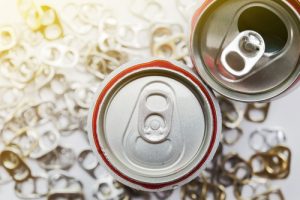 The U.S. UBC recycling rate declined to 49.4 percent in 2016, its lowest level in years.
The U.S. UBC recycling rate declined to 49.4 percent in 2016, its lowest level in years.
The consumer recycling rate for aluminum cans was down from 54.5 percent a year earlier. The 2016 number equates to 1.23 billion pounds of cans recycled out of nearly 2.5 billion pounds available for recycling. It was announced in the Aluminum Association’s annual key performance indicators report.
It was the second consecutive year of decline for the consumer rate and the lowest percentage since at least 2009. The closest rate during that eight-year period was in 2010, when consumer UBC recycling dropped was at 49.7 percent, according to previous year reports. In the following years, it rose steadily and spiked in 2014, before falling slightly in 2015 and more substantially in 2016.
“The decline in the buying price of UBCs may have prompted sellers to hold onto the metal longer, waiting for prices to recover,” the association wrote. It added that an overall decline in aluminum pricing may have led scrap consumers to purchase and substitute primary or secondary aluminum from other non-UBC sources into their stream.
The report also calculated an “industry recycling rate,” which includes imported and exported cans as well as domestic material. That figure fell to 63.9 percent, down slightly from 64.3 percent in 2015.
The association noted aluminum cans are recycled more than glass and PET container counterparts, which the association says had respective recycling rates of 39.5 percent and 30.1 percent.
“The rate provides a snapshot of how well municipal recycling programs are performing nationwide, though it can still be impacted by year-to-year fluctuations in metal flows and commodity prices,” the group wrote.
The 2016 rate was released in June with little fanfare, going mostly unnoticed by the recycling industry. The 2013, 2014 and 2015 rates were announced with press releases.
More stories about metals
- Aluminum Association urges action to boost markets
- Tariffs on Canada and Mexico take hold
- Aluminum giant shares expansion plans



